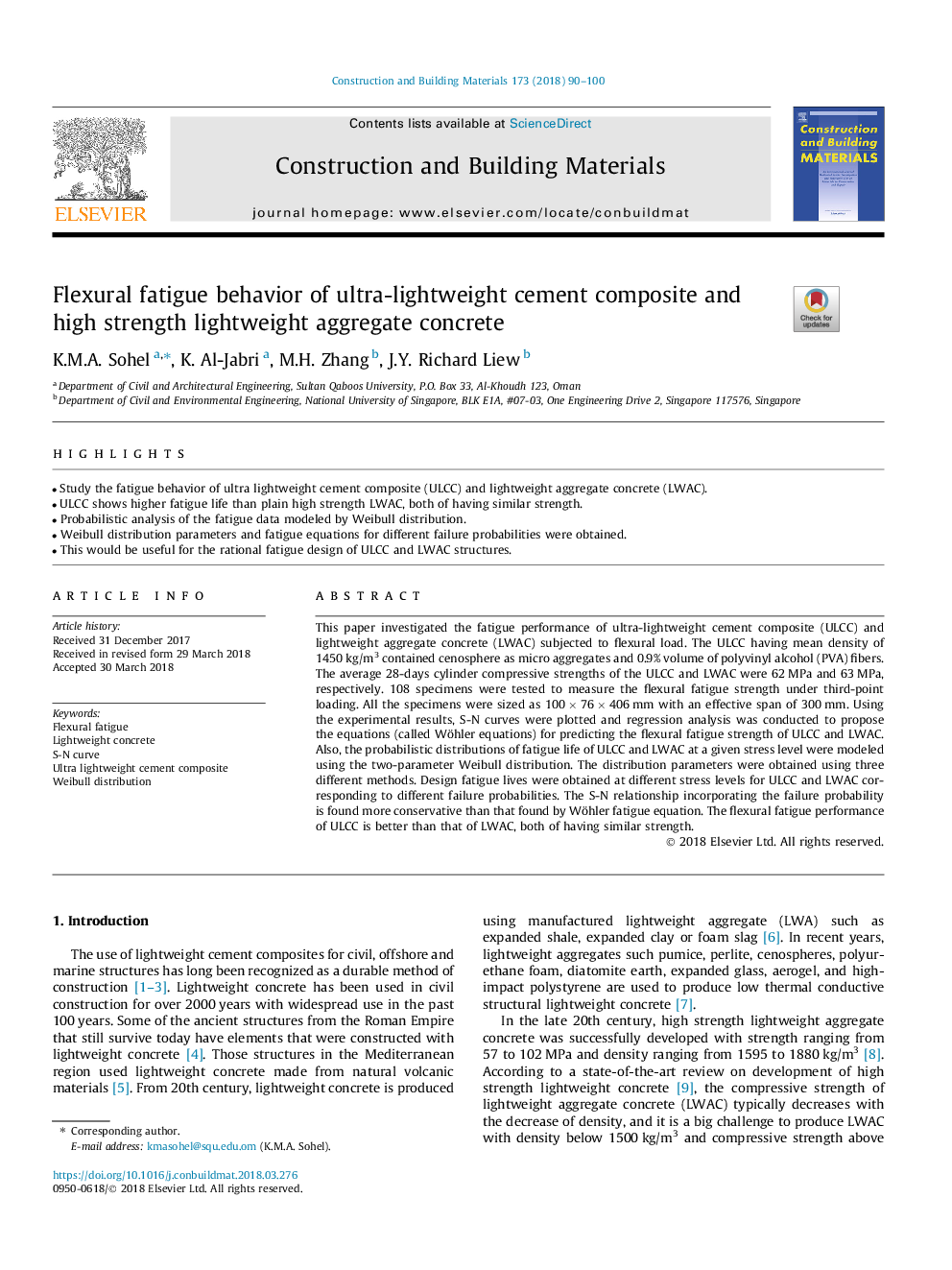| Article ID | Journal | Published Year | Pages | File Type |
|---|---|---|---|---|
| 6713519 | Construction and Building Materials | 2018 | 11 Pages |
Abstract
This paper investigated the fatigue performance of ultra-lightweight cement composite (ULCC) and lightweight aggregate concrete (LWAC) subjected to flexural load. The ULCC having mean density of 1450â¯kg/m3 contained cenosphere as micro aggregates and 0.9% volume of polyvinyl alcohol (PVA) fibers. The average 28-days cylinder compressive strengths of the ULCC and LWAC were 62â¯MPa and 63â¯MPa, respectively. 108 specimens were tested to measure the flexural fatigue strength under third-point loading. All the specimens were sized as 100â¯Ãâ¯76â¯Ãâ¯406â¯mm with an effective span of 300â¯mm. Using the experimental results, S-N curves were plotted and regression analysis was conducted to propose the equations (called Wöhler equations) for predicting the flexural fatigue strength of ULCC and LWAC. Also, the probabilistic distributions of fatigue life of ULCC and LWAC at a given stress level were modeled using the two-parameter Weibull distribution. The distribution parameters were obtained using three different methods. Design fatigue lives were obtained at different stress levels for ULCC and LWAC corresponding to different failure probabilities. The S-N relationship incorporating the failure probability is found more conservative than that found by Wöhler fatigue equation. The flexural fatigue performance of ULCC is better than that of LWAC, both of having similar strength.
Keywords
Related Topics
Physical Sciences and Engineering
Engineering
Civil and Structural Engineering
Authors
K.M.A. Sohel, K. Al-Jabri, M.H. Zhang, J.Y. Richard Liew,
